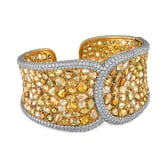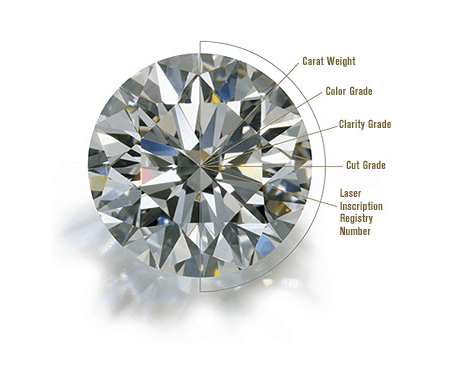In the bustling jewelry marketplaces of Manhattan and Queens, one of the critical factors that can enhance your sale potential is the identification of jewelry hallmarks. These tiny impressions, usually found in an inconspicuous spot on your piece, can authenticate your items and significantly increase their value. This article provides an overview of jewelry hallmarks and their importance in the New York City jewelry trade.
Also Read: The Art of Jewelry Resale in NYC: Enhancing Value and Interest .jpg?width=431&height=287&name=P%20(27).jpg)
What Are Jewelry Hallmarks?
Jewelry hallmarks, also known as 'maker's marks' or 'metal purity marks,' are tiny stamps usually found on precious metal jewelry. They provide information about the piece, such as the manufacturer, metal content, and sometimes the year of manufacture.
Why Are Jewelry Hallmarks Important?
"Jewelry hallmarks serve as an authenticity stamp. They offer assurance to potential buyers about the quality and legitimacy of the metal. This transparency increases buyer trust and can boost your item's sale potential." - Mark Kandinov
How to Identify Jewelry Hallmarks?
Identifying hallmarks can be a bit challenging due to their small size. Usually, a magnifying glass or jeweler's loupe will be required. Hallmarks are often found on the inside of rings, the clasp of necklaces, the backside of pendants, or the posts of earrings. They consist of numbers, letters, or symbols, each representing different information:
- Manufacturer’s Mark: This indicates the maker of the jewelry piece. In NYC, some well-known manufacturer's marks include "T&Co" for Tiffany & Co. and "Cartier" for Cartier.
- Purity Mark: This signifies the metal content of the piece. For instance, '925' signifies sterling silver, '585' indicates 14k gold, and '750' represents 18k gold.
- Assay Mark: This denotes the office where the piece was tested and marked. This is more common in European jewelry.
- Date Letter: Some pieces have a date letter, indicating the year the piece was made or hallmarked. This is also more common in European jewelry.
- Trademark: Some jewelry has a trademark symbol that is unique to the company that produced it.
The Role of Hallmarks in Jewelry Sales 
The presence of a hallmark is a significant advantage when selling your jewelry. It authenticates your piece and assures potential buyers that they are investing in genuine, high-quality jewelry. It also provides valuable information that can help determine the price of your piece.
Before selling, if you're unable to identify the hallmarks of your piece, consider seeking help from a professional jeweler in Manhattan or Queens. They can assist in deciphering the marks and provide additional insight into your piece's history and value.
In conclusion, understanding and identifying jewelry hallmarks are critical steps in the process of selling your precious items. In a city like New York, with its vast and dynamic jewelry market, these small stamps can make a big difference, boosting both the authenticity of your items and their potential sale value.
Also Read: Insider Tips for Selling Jewelry in NYC on 47th Street








